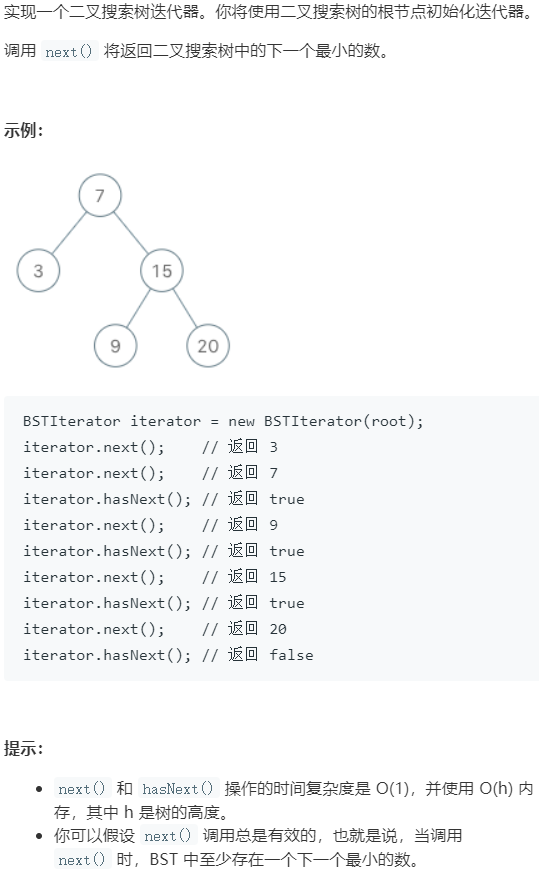NO.173 二叉搜索树迭代器 中等

思路一:栈 看到空间要求 O(h) 的时候,就可以大概想到是对树做递归,递归栈的大小取决于树的高度。
要求 next() 返回当前最小节点,如果一直调用直至树为空,应该返回一个递增序列,即 BST 的中序遍历。
树的定义:
1
2
3
4
5
6
| public class TreeNode {
public int val;
public TreeNode left;
public TreeNode right;
public TreeNode(int x) { val = x; }
}
|
迭代器:
1
2
3
4
5
6
7
8
9
10
11
12
13
14
15
16
17
18
19
20
21
22
23
24
25
26
27
28
29
30
31
32
33
34
35
| public class BSTIterator {
Stack<TreeNode> stack;
public BSTIterator(TreeNode root) {
stack = new Stack<>();
this.inorder_left(root);
}
private void inorder_left(TreeNode root) {
while (root != null) {
stack.push(root);
root = root.left;
}
}
public int next() {
TreeNode node = stack.pop();
if (node.right != null) {
inorder_left(node.right);
}
return node.val;
}
public boolean hasNext() {
return !stack.isEmpty();
}
}
|
时间复杂度:O(1) hasNext() 毋庸置疑的是个 O(1) 操作; next() 操作虽然有一个最坏情况(呈链表)下 O(n)的操作,但是每个节点只会入栈一次,所以 n 次 next() 操作平均下来时间复杂度依然是 O(1) ,这是一种”摊还”的概念。
空间复杂度:O(h) h 树的高度
本人菜鸟,有错误请告知,感激不尽!
更多题解和源码:github
